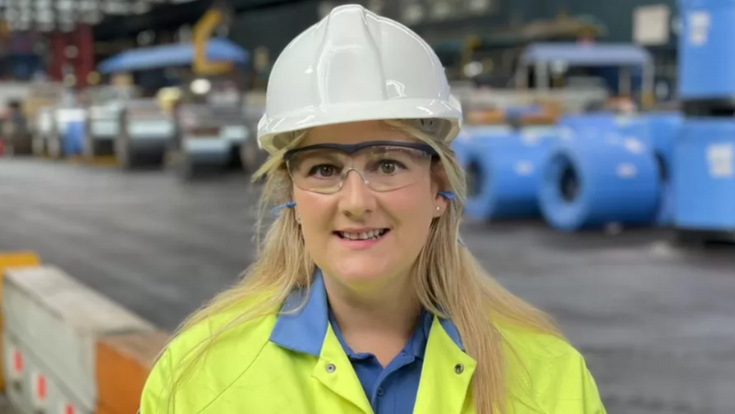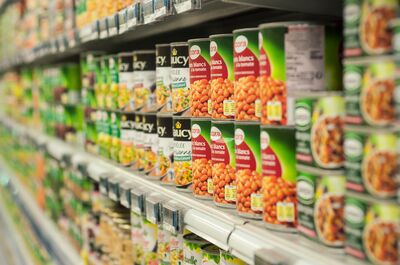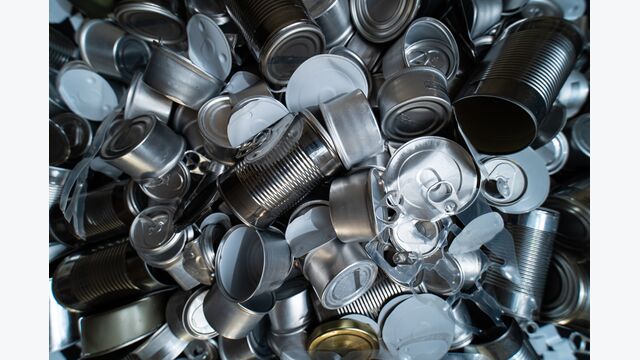Steel Recycling : "All steel is recyclable whether it’s packaging, a car or a bridge"

You are responsible for steel packaging recycling. What products/applications fall under this scope?
We are responsible for all steel packaging placed on the domestic and commercial market i.e. food and petfood cans, aerosols, jar lids and bottle tops, biscuit and confectionary tins, cosmetic tinplate packaging, paint tins, drums and baby food containers in tinplate.
Is there a difference in recycling steel packaging and other, larger products made of steel?
All steel is recyclable whether it’s packaging, a car or a bridge! At Tata Steel, we recycle many grades of scrap - one of them being steel packaging. Steel has a special designation as a permanently available material, which means due to its circular qualities, it can be recycled infinitely with no change to its core properties and no change in quality. All steel has the potential to be melted down and re-made into new steel.
How has the steel recycling technology developed over the years?
Recycling steel has always been a fundamental part of the steel-making process. The technology has long been in use, but in my opinion, it is the collection infrastructure that has changed over the last 25 years. Household recycling collection schemes, which include steel (and other metal) packaging formats, have made a substantial difference to the amount that is recycled.
Like our content? Stay connected by subscribing to our newsletters!
What is essential to steel recycling?
The most important element to steel recycling is the availability of scrap steel for melting down in our convertors. For maximum effectiveness, steel packaging should be kept separate from other materials to ensure it enters the recycling stream and by encouraging consumers to recycle all steel packaging, we’re able to recover as much of the material as possible.
What are the challenges in steel recycling?
Quality feedstock is always a challenge in steel recycling and steel packaging is a recognized grade which is traded alongside other scrap steel. The whole supply chain from consumer though to local authority and scrap yards must work together to ensure that contamination doesn’t occur at any time.
What are the recycling rates for steel? How much of it still ends up in landfill?
The latest published recycling rate for steel packaging is 78 per cent, however, we know that the physical recycling rate is much higher than this but unfortunately it is not all counted. Steel is also easily extracted from waste stream because it is magnetic.
It is important to raise awareness amongst consumers that we need every single item to be recycled, not just the obvious steel food and petfood cans, but also the lids, bottle tops as well as aerosols and drink cans.
What role do consumers play in achieving a circular economy?
Steel is a model case for the circular economy - its special designation as a permanently available material means that it is also a sustainable choice for packaging formats.
Consumers, though, have a huge role to play in achieving a circular economy and sometimes it’s the smallest actions that can have the largest impacts. The entire steel packaging value chain needs to work together to encourage all consumers to dispose of their waste correctly – putting the right can in the right recycling bin.
At Tata Steel, we have an active packaging education recycling programme that runs in schools and community groups. Over the years we’ve conducted hundreds of workshops highlighting the importance of positive recycling habits.
We also work with Metal Matters, a communications programme that helps local authorities to educate householders about metal packaging and hopefully motivates them to review and boost their recycling habits. And we're constantly looking for new opportunities to spread the word.
Of course, at the other end of the transactional scale, consumers also have purchase power – they can make decisions to opt for products and goods in sustainable packaging materials like steel.
What incentives are necessary for consumers to collect and recycle correctly?
Household recycling collection schemes are already designed to make the practice as easy as possible and accessibility plays an important role in securing high recycling rates.
Many consumers are highly motivated to adopt a sustainable lifestyle to safeguard the planet for future generations. It’s this ethos that drives their passion for recycling and for choosing products in closed-loop packaging.
Steel can be recycled endlessly – but does it suffer a decline in quality?
In short, the answer is a resounding no! Steel can be recycled again and again into different products, without loss in quality.
Is there enough of an end-market for recycled steel?
Globally there is a high demand for recycled steel and in the UK we have many reprocessors and exporters to provide an end market for scrap steel.
What impact did the global events of recent years – pandemic, war in Ukraine – have on the industry?
Since the pandemic, canned foods in particular have enjoyed a true renaissance.
TV and celebrity chefs such as Theo Michaels from Steph’s Packed Lunch and Canned Food UK ambassador, have really championed the versatility of tinned foods and its nutritional value. Consumers have also increasingly realised its benefits such as its long shelf life reducing food waste and its convenience - all the food preparation is done for you!
Of course, this means that as canned foods have risen in popularity, the demand for its steel packaging has also increased.

How do you see the future of steel recycling?
Recycling steel packaging will always be a fundamental part of the steel making process.
As its recycling rate increases, we will need to continue to ensure each piece of steel packaging is counted and not lost in other grades of scrap. It is also important to raise awareness amongst consumers that we need every single item to be recycled, not just the obvious steel food and petfood cans, but also the lids, bottle tops as well as aerosols and drink cans.
Every small action has a big impact – with everyone’s help, I firmly believe we can achieve a 100% steel recycling rate!


